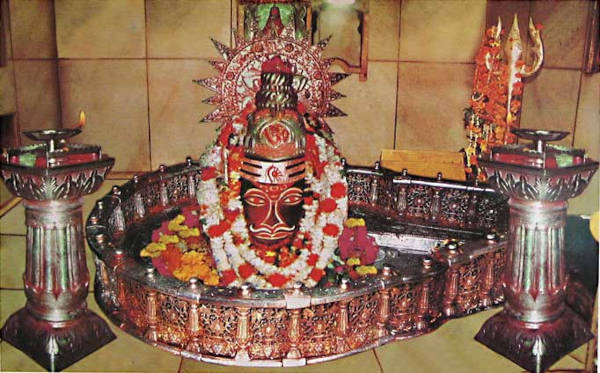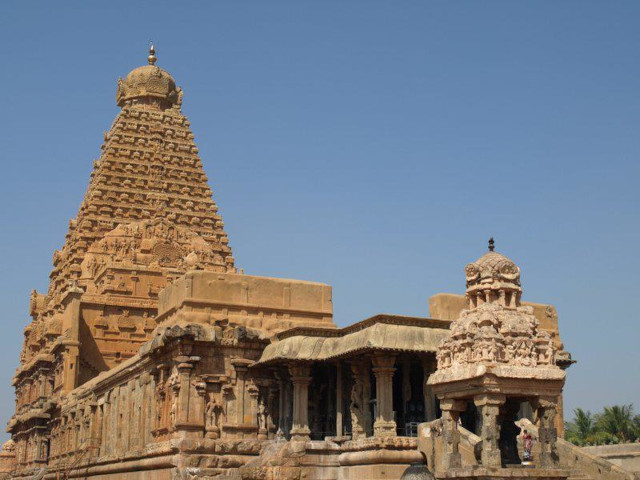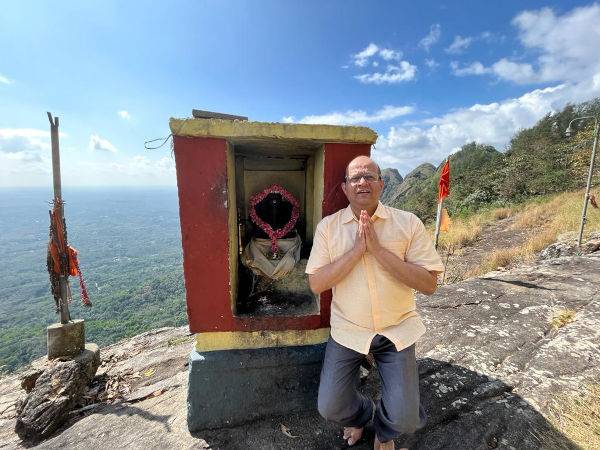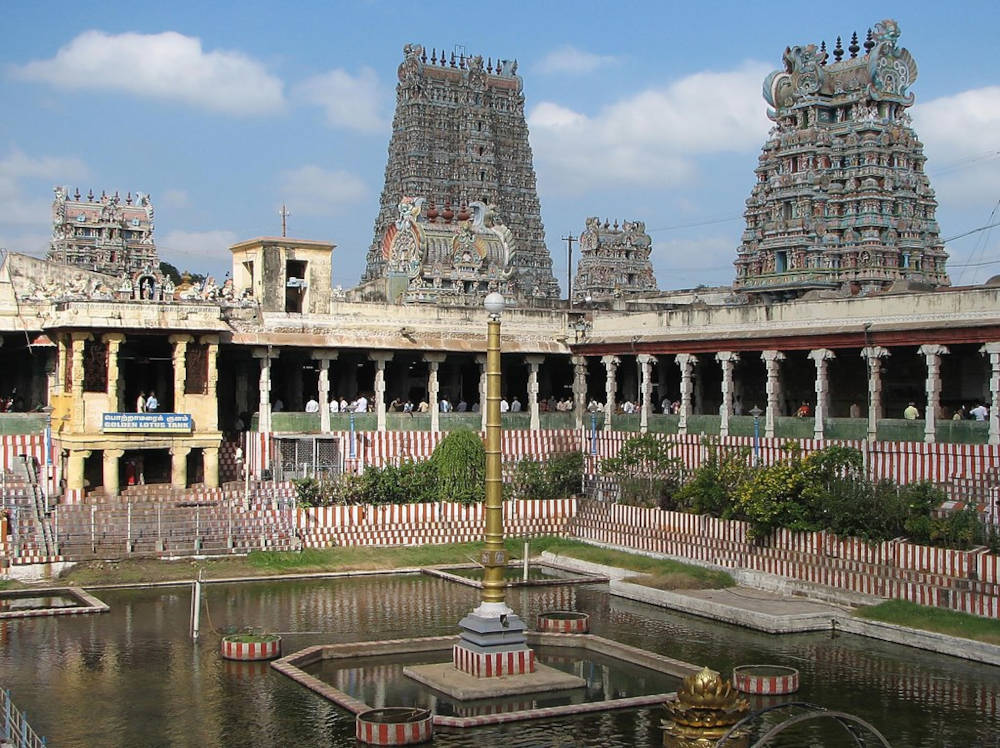[Meenakshi Amman temple, Madurai. Photo by Bernard Gagnon - Own work, CC BY-SA 3.0, via Wikimedia]
Our good friend Raja Narayanaswami’s gift to us — a short piece on his visit to Ujjain’s Mahakaleshwar Jyotirlinga that he sent along with his travelogue on Nepal — sparked an intense discussion in the team.
What do temples represent beyond religion?
Here are three stories — of spiritual experiences; their place in India's history and civilization, if you will; and as repositories of knowledge and inspiration.
A bridge between the physical and the spiritual
Religions and Gods aren’t really my strong suit. And yet, this post is about a temple trip that I undertook in my birthday week.
Contrary to the simplistic view of temples being a place of worship, there is a lot that we do not understand yet. The intricate architecture, based on rules from the Agama Shastra, an elaborate science behind energies and how to harness them, is a bridge between the physical world, which we see and experience, and the spiritual realm. There is a deep symbolism in temples of India, much of which we are rediscovering.
So, Ujjain — the city of Mahakaal, that Master of Time and Death, welcomes me with open arms at 2 a.m. on September 10. I am there in the wee hours for the Bhasma (ash) Aarti at the Mahakaleshwar temple.
As I trudge into the temple complex, amidst a sea of devotees dressed in traditional attire and passionately singing and chanting His hymns, the irony of the moment is not lost on me.
Why am I here? At this precise moment?
My thoughts interrupted by jolts and pushes by devotees in serpentine queues meandering across corridors, I finally perch myself in the Nandi Mandapam, ready to witness the magic unfold.
The wake-up ritual begins with a simple bathing of the lingam — water first, then milk, oils (or was that honey?). A priest then anoints the deity with flowers, bael leaves (Bilva), sandalwood and turmeric paste, and in a skill that would put most accomplished makeup artistes to shame, creates a whole facial image, complete with moustache and red lips in thirty minutes flat.

[By Udit Sharma, CC BY-SA 3.0, via Wikimedia Commons]
The crowds burst into powerful, soul-stirring chants of Har Har Mahadev, Om Namah Shivaya and Jai Mahakaal. The bells, drums and cymbals clang and resonate in the morning air. After adorning a white cloth over the face that the artist-priest had made, the chief priest begins the Bhasma Aarti by waving a whitish grey pouch over the lingam, letting a cloud of ash anoint the lingam. The ritual continues, turning the darkish lingam completely grey, with a smoke of ash engulfing the sanctum sanctorum.
A quick aside: the temple historically sourced fresh Chita Bhasm (ash from the last funeral pyre burnt at night) for the ritual, but of late, it is made by burning cow dung and a few other herbs.
I look on with awe, spellbound by the alternating crescendos and ebbs of the chants and the power of collective emotion. Mahakaal is now ash-white, complete with a silver crown, a silver garland of skulls, flowers and other decorative elements. In all His resplendent glory.
What happens next is something I am not prepared for. That holds the secret to why I have been summoned to this middle-of-nowhere town in the wee hours on the eve of my 50th year on this planet.
Even as I look on, the chief priest washes off all the flowers, sandalwood, honey, turmeric and ash from the Lingam — restoring it to its pristine avatar — formless, shapeless, devoid of any adornments. In less than a minute, Mahakaal is back to being who He was, at the beginning of it all.
6 am screams my watch. Somewhere on the horizon, the sun signals a new dawn. I slowly walk out of the mandapam, grateful for his Grace and Abundance.
With more questions, some answers. And a realisation that the one thing I don’t have is Time.
Looks like Shiva's not the only one who’s woken up!
Seeing connections
By NS Ramnath
In 2003, around this time 20 years ago, neuroscientist VS Ramachandran gave a series of talks as a part of BBC’s Reith Lectures. One of the most fascinating talks in this series was on art and the brain. In that, he answers a question that must have occupied our brains at one time or the other. Why do we find ourselves moved by Van Gogh's sky or Picasso's cat? They don't look like what they claim to represent, yet something in us moves.
Ramachandran reveals an answer by pointing to an experiment conducted by Niko Tinbergen on seagull chicks. Tinbergen wanted to find out how exactly they recognised their mothers. We might think that chicks probably have a high-fidelity image of an older seagull — and when the images matched, they knew it was their mother. The answer, however, is more interesting. The chicks, apparently, have abstracted all that information that might be in a high-fidelity image to just a long stick with three red stripes. In fact, all you have to do is to show a stick with three red stripes, and chicks would react as if they saw their mother.
Something similar happens to us when we look at a Picasso or for that matter a Chola Bronze, which unlike Michelangelo's sculptures, might look distorted, and yet move us to no end. Ramachandran in fact came up with ten universal laws of art. And the idea struck him while he was sitting in Kapaliswarar temple, in Mylapore, Chennai. If you visit the temple, you won't be surprised that it was a source of such inspiration. It’s an ancient temple, with an expansive water tank. You can still hear people chanting the Vedas, which can take you back to another era. Yet, you are also aware of the temple's location — right in the middle of the city, surrounded by shops and restaurants, with people rushing in cars, bikes and bicycles. It's as if the place is optimised to see the connections better — between the old and the new, the spiritual and the temporal, between science and art.
[Aesthetic Universals and the Neurology of Hindu Art - Vilayanur S. Ramachandran]
Listen to the Reith Lectures: Artful Brain
About 250 kilometres away from Kapaliswarar temple, there is another temple dedicated to Shiva. It was built by Rajendra Chola, the son of Raja Raja Chola, whose story is captured in Mani Ratnam's two-part movie Ponniyin Selvan (the second part will hit the screens later this month), based on a five-volume novel by Kalki Krishnamurthy. Last year, in a conversation with Sharad Sharma, Sridhar Vembu, founder and CEO of Zoho said that as a kid, he used to go to the temple very often (it was just a few kilometres from his ancestral village). He would be struck by the contrast between the majesty of the temple — its size, the technological capability that it would have demanded from the builders a 1000 years ago — and the poverty that surrounded the temple. He would ask himself, how did we lose that technical capacity and wealth over the years; why are some countries rich, and why are some poor? His quest for answers took him to IIT, Princeton and to the world of business.
[Watch: Sridhar Vembu & Sharad Sharma | Building Back Better: Lessons from Zoho's Founder]
Temples can help us see the connections. Several years ago in the Thanjavur big temple, I watched a Bharata Natyam performance by Padma Subrahmanyam one evening. The audience sat on the lawns, and she danced on the platform next to the big Nandi statue.

[Thanjavur temple. Photo by NV Sharadha]
It was a fascinating experience enhanced by the cool breeze that ruffled our hair after brushing against the 1000-year-old sculptures and pillars. After the programme, she gave a short speech talking about her own research, and how useful the temple was as a repository of knowledge from those years. Later, as I walked around the temple, I paid special attention to the intricate carvings, especially around the structure dedicated to Lord Muruga. The contrast between the bigness of the temple, and the intricately carved flowers reminded me of words that I once heard in MS Subbalakshmi’s rendition of a Purandaradasa song, a description of Brahman: He is smaller than the smallest, and bigger than the biggest. I felt connected.
[MS Subbulakshmi's song]
Grandeur, local traditions, and a deeply moving connection
By Mandar Apte
During a recent visit to South India, I had the opportunity to visit three temples—each a unique experience—that left a lasting impression on me.
At the Meenakshi Amman temple in Madurai, as I walked along the 1000-pillar hall, I marvelled at the pillars, each carved with unique sculptures. Just outside the hall are the Musical Pillars. Each pillar, when struck, produces a different musical note. As an engineer, I was awestruck at the knowledge of metallurgy, acoustics, science and technology that must have gone into their construction in the 6th century.

[Thousand-Pillared Hall, Meenakshi Temple. Photo by Richard Mortel from Riyadh, Saudi Arabia, CC BY 2.0, via Wikimedia]
This temple visit was also special because of a deep spiritual encounter with the presiding deities — Goddess Meenakshi, a form of Parvati, and her consort, Sundareshwar, a form of Lord Shiva. As soon as I stepped into the Garbhagriha (inner sanctum), at the sight of the deities, I wept for nearly 10 minutes even as the engineer in me remained speechless, as there was no logical reason for that emotion that day! Was it the thousands of devotees in the temple that had collectively invoked that devotional energy? Or was it any special preparation that I had done before my visit? Or was it really the energy emitted from the deity? Out of curiosity, I shared my experience with the head priest and he responded, “Millions come every year to get darshan of Amman (Mother Meenakshi) but it looks like today, Amman has given you darshan!” I felt humbled and grateful. After coming out of the temple, I felt light and calm. Sometimes, such deep spiritual experiences are only to be wondered at rather than analysed, I felt. We are not just our physical body. We are also consciousness (energy), as wise Indian sages have told us (and quantum physics has recently discovered).
Next, we visited the Brihadeeswarar Temple in Thanjavur. Built by Chola emperor Rajaraja I between 1003 and 1010 CE, the temple is a UNESCO World Heritage Site. The main deity is Lord Shiva, and one of the highlights of the temple is the towering 66-metre (over 200 feet) high vimana (temple tower). We can only wonder how such a massive one-piece granite, weighing nearly 80 tons, would have been installed at the top of the temple with the then available construction practices. It is an engineering marvel.
Beyond its architectural grandeur, this temple provides valuable insights into ancient Indian culture and traditions through the inscriptions and murals on its walls and pillars. More importantly, to me, the temple is a testimony to the skill and knowledge of the artisans and craftsmen of that era as well as a reflection of the Chola's vision, power and wealth. I had mixed emotions when my visit ended — pride that our ancestors had envisioned and built this masterpiece and sadness as I hadn’t heard about this temple while growing up.
Now, these two temples are actually well known. They were built under royal patronage and have millions of visitors each year. The third temple I visited was much smaller, and was built and maintained by local indigenous people of the Kaani tribe.
It was an accidental discovery. We were driving through the hills in Pathukaani town on the Kerala-Tamil Nadu border and we happened to ask the locals if there was any place of interest nearby. They pointed us to the KaaliMala temple on top of the hill, dedicated to Goddess Kali. (It was quite a strenuous trek, and I almost gave up!)

[The Kaalimala temple]
The Kaani say the Goddess is their source of strength. The priest told us that the temple has stood there for hundreds of years, its history passed down through the generations through stories and oral traditions.
The temple hosts the Chitra Pournami Thiruvizha festival, attended by thousands of people from across the region. Chitra Pournami is the full moon that appears during the Tamil month of April-May. The locals believe that on this day the Devi, having taken the form of Badrakaali, slayed the demon Mamisa Patchini to protect the Kaani people and their land. I plan to visit this year — so do join along if this sharing inspires you!
The story goes that when Rajah Rama Varma, who governed the kingdom of Venad (later known as the Travancore kingdom and eventually the state of Kerala), passed away, the king's nephew Anusham Thirunal Marthanda Varma was declared the heir to the kingdom in accordance with the then-current tradition of marumakkal thayam (matrilineal system of inheritance). Raja Varma’s sons opposed this tradition and sought to ascend to the throne. As a result, there was internal strife and many attempts were made to assassinate Marthanda Varma. He then fled into the Kaani tribe’s woodlands and hid there for several months. It is said that during this time, Goddess Kali appeared in the dream of the Mootu Kaani (the leader of the tribe), directing him to protect Marthanda Varma. The Kaani people gave him food, shelter, and assisted him in securing a safe route; he went on to overthrow the internal coup, and claim the Venad crown. In gratitude, Marthanda Varma gave the tribe possession of 600 acres of land where the temple stands.
As I was listening to this story, I immediately thought of Kantara, the movie.
Each of the temples we visited had a story of its own and collectively they invoked a deep sense of pride in me. While growing up in India, I did not have the means or the motivation to explore our own Indic heritage, tradition and culture. Now, after having travelled across the world as part of my corporate career, I strongly believe that if the whole world is a home, then India is the prayer room for reflection and inner transformation. This has inspired me to start From India With Love, a social venture, where we curate sojourns across India, for leaders and changemakers to discover inner peace and transformation. A strong emphasis during these sojourns is on visiting Indian temples and experiencing their transformational power.
Today, as the world struggles with multiple challenges, leaders are seeking higher wisdom that can recalibrate their purpose and impact. I believe that visiting these ancient temples can provide that inspiration and the much needed mental peace that is so essential when making bold, innovative and visionary decisions.

